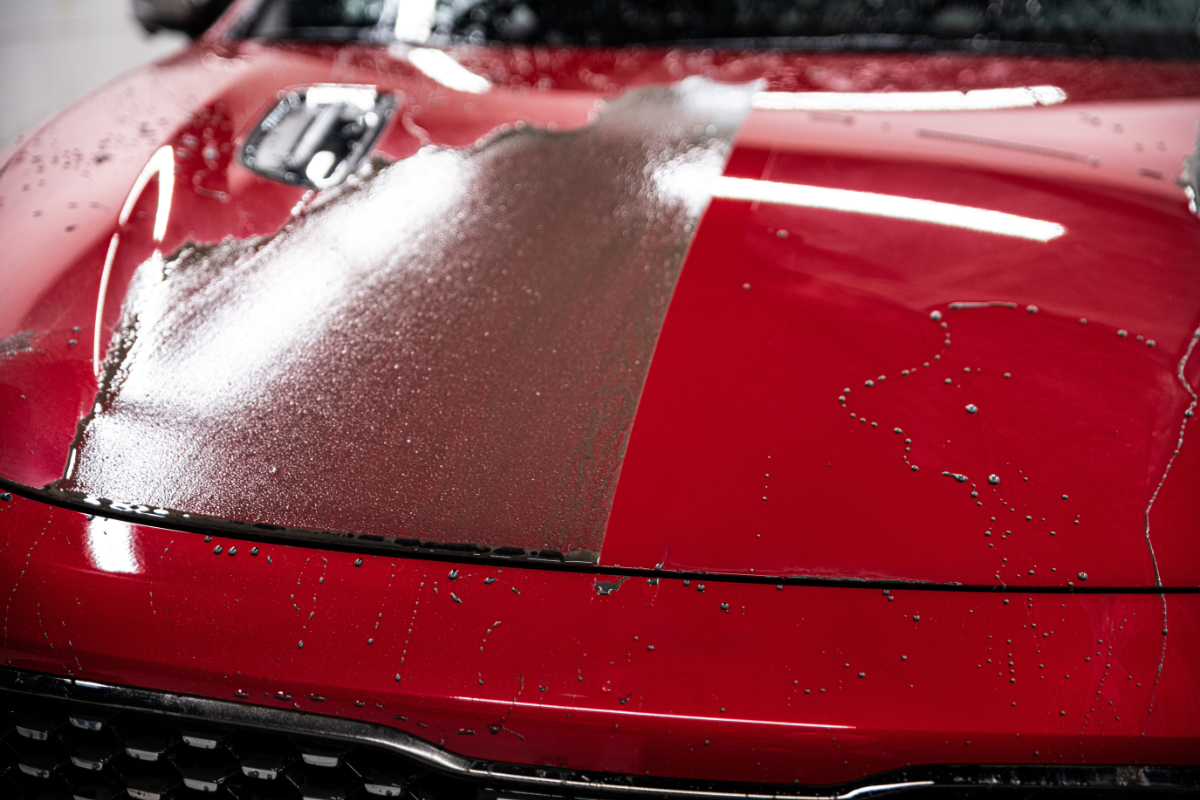Why Ceramic Finish Is the Ultimate Option for a Flawless Complete
Ceramic coating has actually arised as a leading solution for those seeking a remarkable coating for their lorries, many thanks to its impressive durability and safety features. What factors truly set ceramic finishing apart?
What Is Ceramic Covering?

When used correctly, ceramic layer develops a hydrophobic surface area that wards off water and dust, making it easier to keep and clean up. Unlike typical waxes or sealants, which usually supply short-term security, ceramic coatings can last for several years, relying on the item quality and application approach. The procedure of using ceramic coating calls for thorough prep work, consisting of thorough cleansing and in some cases repaint correction, to guarantee optimum bonding and effectiveness.
Ceramic coatings are not limited to auto surfaces; they can likewise be utilized on various products, consisting of glass, steel, and plastics, supplying a flexible solution for boosting protection. Generally, ceramic layer stands for a considerable innovation in surface protection technology, incorporating both useful and aesthetic advantages for a large range of applications.
Benefits of Ceramic Coating
While several surface area security options exist, the advantages of ceramic coating stand apart as a result of its special residential or commercial properties and long-lasting efficiency. One of the primary benefits is its outstanding resilience. Ceramic Coating Philadelphia. Unlike typical wax or sealants that need frequent reapplication, ceramic coverings provide a durable layer that can last for several years, substantially reducing upkeep efforts
One more significant advantage is enhanced security versus environmental impurities. Ceramic finishings develop a hydrophobic surface that pushes back water, dust, and different toxins, making it simpler to cleanse. This feature not only maintains the vehicle's appearance however additionally lessens the danger of rust and oxidation, especially in harsh weather.
Additionally, ceramic coverings use exceptional resistance to UV rays, stopping fading and deterioration of paint in time. This UV defense is essential for maintaining the aesthetic worth of surfaces and cars revealed to route sunlight.
Additionally, the glossy finish achieved with ceramic finish improves the total aesthetic charm, giving surfaces a showroom-quality shine. Generally, ceramic finishes represent a substantial development in surface protection technology, providing enduring advantages that deal with both aesthetic and functional needs.
How It Works
Comprehending the scientific research behind ceramic finishings discloses just how they provide such exceptional defense and longevity. At its core, a ceramic layer is a fluid polymer that chemically bonds with the car's manufacturing facility paint. This bonding produces a safety layer that is both hydrophobic and oleophobic, repelling water, dust, and oil. The key element of the majority of ceramic layers is silicon dioxide (SiO2), which is originated from quartz. This compound contributes to the layer's hardness and resistance to scrapes, UV rays, and ecological impurities.
The application process includes multiple actions, consisting of surface area preparation, which is crucial to attaining optimum adhesion. When used, the finish undergoes a healing procedure, throughout which it sets and develops a semi-permanent bond with the paint surface area. This bond is what differentiates ceramic coverings from standard waxes and sealants, supplying a longer-lasting safety obstacle that can endure for many years.
In addition, the thickness of the layer can enhance its safety qualities, making sure that it can hold up against harsh problems. Inevitably, the scientific research of ceramic layers integrates innovative materials with cutting-edge application strategies to deliver an unrivaled degree of security and visual enhancement for vehicles.
Comparison With Traditional Methods
The benefits of ceramic finishings come to be specifically obvious when compared to conventional paint defense approaches such as waxes and sealers. While waxes provide a momentary sparkle, typically lasting a few weeks to a number of months, ceramic layers provide a resilient protective layer that can sustain for numerous years. This longevity dramatically lowers the frequency of reapplication, making ceramic coverings an extra economical remedy in time.
In addition, conventional techniques commonly require extensive prep work and several applications to accomplish an acceptable level of defense. On the other hand, ceramic layers bond at a molecular degree with the vehicle's surface area, developing a robust guard against environmental impurities like UV rays, acid rain, and road salts. This bond enhances the vehicle's resistance to scratches and swirl marks, which prevail with traditional waxes and sealants.
Moreover, the hydrophobic residential or commercial properties of ceramic coverings ward off water and dirt, bring about simpler cleansing and upkeep. On the other hand, wax and sealant-treated surfaces can bring in grime, requiring even more frequent washing - Ceramic Coating Philadelphia. On the whole, ceramic coatings not only give premium protection but additionally supply Bonuses a much more visually attractive and enduring finish, developing them as the preferred choice for critical automobile owners
Application and Maintenance Tips

Utilizing a foam applicator, use the finish in little areas, following the supplier's standards concerning thickness and overlap. Enable enough healing time in between layers, typically 24 hr, to make sure proper bonding. After application, it is essential to avoid direct exposure to water or extreme aspects for at the very least a week to allow the finishing to fully treat.
In addition, making use of a ceramic upkeep spray can enhance the coating's hydrophobic browse around this web-site buildings and longevity. Normal evaluations for any signs of wear will aid preserve the covering's stability and maintain that excellent surface.
Verdict
In final thought, ceramic finish arises as a remarkable alternative for achieving a remarkable vehicle coating. By developing a durable bond with manufacturing facility paint, ceramic finish properly shields versus scratches, UV rays, and ecological pollutants.
